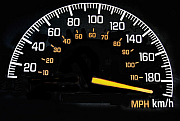Craps Hedging 2
by Frank Scoblete
In this Learn to Play Craps lesson, we continue the discussion with Craps Hedging 2.
First, let’s establish how dangerous a come-out roll is for a $20 Don’t Pass bettor.
It is very dangerous as he stands to lose $160 when the 7 and 11 roll and win a mere $60 when the 2 or 3 rolls. That’s a net loss of $100, on average, for every 36 come-out rolls.
So this clever player hedges his $20 Don’t Pass bet by wagering $5 on the Any Seven bet, which pays off at four to one.
If the shooter rolls a 2 or 3, our Don’t Pass bettor wins $20 but loses his $5 Any Seven for a gain of $15. How often will he win that $15? Three times for a net gain of $45.
Now, the formerly dreaded 7 rolls and what happens?
A washout on the six times that would have previously been losers as the Any Seven wins $20 and the Don’t Pass loses $20 on each and every 7. We are still losing on the 11, a loss of $40 but overall, at this stage, we are ahead $5.
But then the craps hedging falls apart as we still have to get past those 24 Point numbers and the “bar 12,” the totality of which costs us $125 for the Any Seven bet, for a net loss on the Don’t Pass come-out craps hedging of $120 -- instead of the $100 had we not hedged at all. That’s a 20 percent increase in our losses! Depressing. So, memorize this: Don’t,“Don’t” hedge!
There is a way to win 83.33 percent of all your decisions and it is a craps hedging system that is often sold that way.
This craps hedging method involves betting the Field (the numbers 2, 3, 4, 9, 10, 11, and 12) along with Place bets on the 5, 6 and 8.
Doing this covers 30 of the 36 possible outcomes of a craps roll -- an 83.33 percent success rate.
Let’s see how this can work for a $10 bettor. Our Field Hedger bets $10 on the Field, $10 on the 5, and $12 on the 6 and $12 on the 8 for a total wager of $44. Any time one of our Field numbers hits, we win $10, except on the 2 and 12 where we win $20 as these pay off at two to one. However, when the 5 hits, we win $14 but lose the $10 Field Bet for a net win of $4. When the 6 or 8 rolls, we also have a net win of $4 on each because we again win $14 but lose $10.
In 36 rolls that perfectly reflect probability, the Field Hedger will win for a total of $212.
This craps hedging system looks great but the clinker comes with the appearance of the evil 7.
On the six occasions when the “devil jumps up,” we will lose all of our bets -- $44 X 6 = for a loss of $264.
Therefore, this hedging system costs the player $52 for a completed sequence of wagers in the long run.
Yes, you will win 30 decisions and lose only six decisions, but those six losses will kill you. Field hedges are poison ivy for the craps player; avoid them.
Are all craps hedges such that they invariably increase house edges? Not at all. Actually, the most popular bet at craps, Pass Line followed with Odds is a hedge bet, although not the usual hedge of equal and/or opposites.
If we expand the definition of hedge to include any multiple bets that work “together”, then surely the Pass Line with Odds fits the bill.
If you have $25 to wager and decide to put it all on the Pass Line, you will face a smallish 1.41 percent house edge and an expected loss, on average, of 35 cents each time you make it.
However, if you decide to break the bet up into two different ones, the Pass and the Odds, then you would put, say $5 on the Pass Line and, once up on a point number, back it with $20 in Odds.
The Odds bet is a separate bet, albeit one that can only be made if you have the requisite Pass Line bet in action. Your expected loss is now reduced to seven cents each time you use this as your mode of betting. That’s a healthy hedge.
Craps Hedging betting is meant to insure that a player can win small amounts frequently at the expense of a greater house edge on one’s money. In the long run, hedging your bets is a foolish thing to do in most cases, as the bets that are often used for hedging purposes are high house-edge bets. High house-edge bets can’t protect low house-edge bets.
If you find yourself falling for hedge-betting’s allure, perhaps you should ask yourself if you are betting too much money in the first place. The need to hedge often comes from a sense of insecurity in the bets you want to make.
If a Pass Line bet of $50 makes you tremble at the thought of a loss, perhaps a more modest $10 should be your bet, and forget about trying to “insure” your $50 bet with an Any Craps hedge.
Craps has scores of individual bets that can be made during the course of play -- from Hardways to Crazy Crapper proposition bets, to the Field, to all varieties of Place bets on the “Do” and the “Don’t,” to the Pass Line, Come, Don’t Pass, Don’t Come, Odds bets to Hop bets, and then every possible combination of each. The totality of the betting possibilities would be staggering.
The overwhelming majority of bets at craps—stink.
So, the bottom line on hedging is this: With the exception of the Odds bet at craps, trim the hedges from your game!
Craps Hedging2 is followed by Regression Betting
OR
Return to Learn to Play Craps Program
Gambling Teachers home
GT is attentive about getting the word out about our free programs, lessons and add-ons offered, however, we ask your assistance and consideration in promoting us.
Click link below that reads, "Enjoy this page? Please pay it forward. Here's how..." to add a link to your site, blog or personal page.
Tips, Terms & Wins
Craps Numbers: 11, known to everyone and all as the “yo-eleven,” is my favorite of the craps numbers because it comes from the department of redundancy and repetition department.
The house edge on the yo-eleven is, holy cow! 11.11 percent. Something’s up.
The yo-eleven, which literally means 11/11 comes in with an 11.11 percent house edge.










